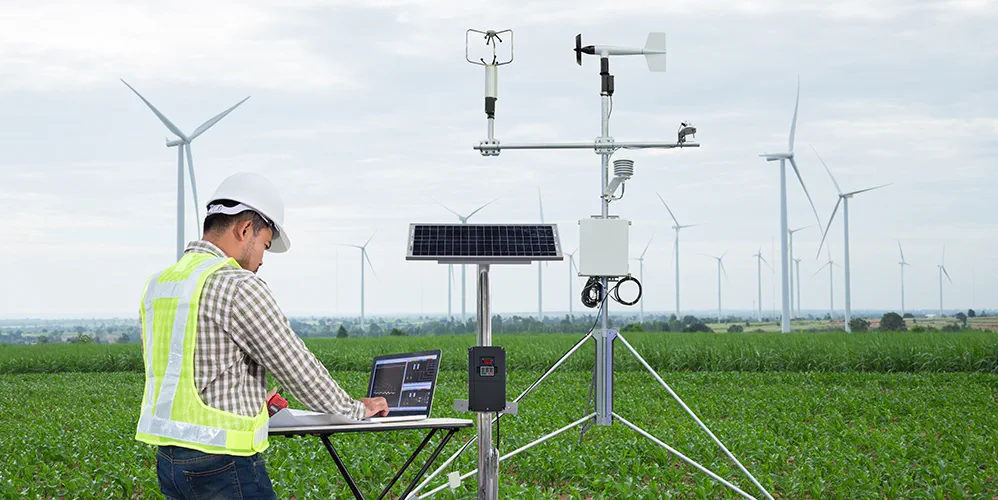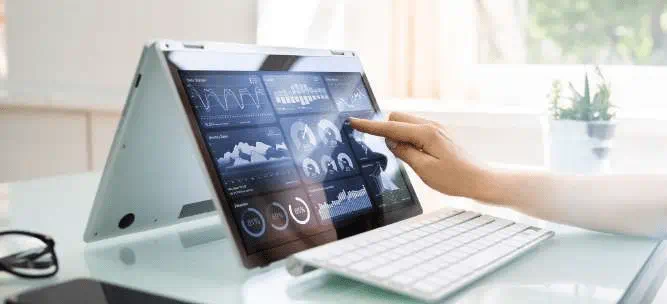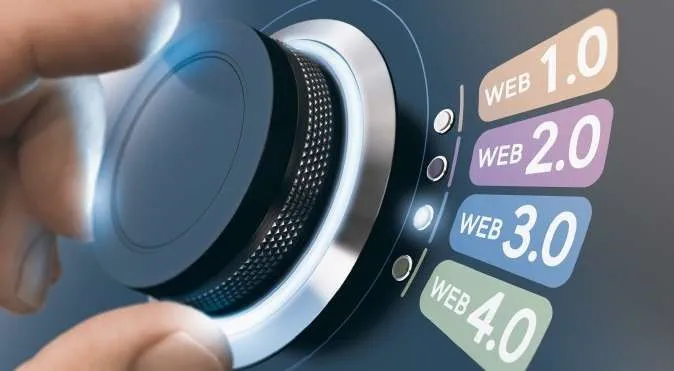
Smart Farming
28 मई 2021

Dear Reader,
Smart farming can be referred to as the 4.0 green revolution in the field of agriculture combining agriculture methodologies with technology — Sensors & Actuators, Information and Communication Technology (ICT), Internet of Things (IoT), Robotics and Drones to achieve desired efficiencies of production which are sustainable.
According to a survey, 80% of farmers in US and 24% farmers in UK have already started using Smart Farming Tool (SFT). These numbers are cognizant of the fact that SFTs are adding value to the farming ecosystem. As far as the scale of operations is considered, Smart farming tools and techniques can be applied to large scale and on the other hand distributed conventional farming can be applied to focused small farming set of organic farms.
Through remote sensing, smart farming system reduces waste, improves productivity and enables optimum resource management. For the benefit of micro farming, multiple crops are grown simultaneously on remote lands which require different care, manure, soil and water. By linking local sensors to smart irrigation and control, things like sensing pH balance of the soil, gauging local temperature is now possible through remote monitoring and sensing rather than walking the field all the time. This leads to increase in the yield as farmers can save on time and focus on the real issues of farming — pest control, irrigation and amending soil conditions all using sensing and automation.
Companies like Robotics Plus, a startup with USD 10 million funding from Yamaha is planning to deploy its fruit plucking robots into production, while Ecorobotix with their Weed Zapping Robots have gained considerable momentum owing to the growth in Smart farming techniques.
Precision farming system has a lot of dependency on the software management systems. Control systems manage sensory input, delivering remote data for supply and decision support, as well as automation of machines . Basically, it is a standardized business approach balancing the demand and supply side with respect to resource management.
During production, it is mostly resource management from a growth and yield perspective. For instance, precision seeding uses automated tractors to reduce seed loss and seeding with proper space management between different plants. Another example is of precision water delivery.
On the demand side, it is about demand forecasting and delivering goods just in time to reduce waste.
India has always been an agrarian state, and traditional farming methods are manual and too labour intensive. Smart Farming can also provide great benefits in terms of environmental issues, for example, through more efficient use of water and optimisation of treatments and inputs
Credits : Akhil Handa Clint James
Popular Articles
Related Articles










-
Disclaimer
The contents of this article/infographic/picture/video are meant solely for information purposes and do not necessarily reflect the views of Bank of Baroda. The contents are generic in nature and for informational purposes only. It is not a substitute for specific advice in your own circumstances. Bank of Baroda and/ or its Affiliates and its subsidiaries make no representation as to the accuracy; completeness or reliability of any information contained herein or otherwise provided and hereby disclaim any liability with regard to the same. The information is subject to updation, completion, revision, verification and amendment and the same may change materially. The information is not intended for distribution or use by any person in any jurisdiction where such distribution or use would be contrary to law or regulation or would subject Bank of Baroda or its affiliates to any licensing or registration requirements. Bank of Baroda shall not be responsible for any direct/indirect loss or liability incurred by the reader for taking any financial decisions based on the contents and information mentioned. Please consult your financial advisor before making any financial decision.
Road Network Management with AI
Dear Reader,
The lack of road safety in India is increasingly becoming a matter of major concern. According to National Crime Records Bureau (NCRB) data, India recorded around 4.3 lakh road accidents in 2019, which took the lives of 1.5 lakh people. Poor road infrastructure, encroachment, and increasing number of vehicles have contributed to the high number of road hazards in the country. The solution seems clear: real-time road monitoring and information collation about road infrastructure.
New Delhi-based deep tech startup Nayan India Science and Technologies has developed a road safety and traffic monitoring solution that uses a camera, computer vision and artificial intelligence. The application constantly monitors roads, infrastructure, and traffic violation. The AI Powered algorithms analyse the video feeds and alert in case of violations, defects or dangers on the road. The B2B SaaS startup works with road transport authorities, insurance companies, private aggregators, public transportation fleets etc. to provide real world, last-mile analytics to better revenue channels.
RoadMetrics is an AI-based solution that uses image and sensor data obtained from a simple smartphone to classify road defects, signs, traffic signals, street lights, etc. This road and street-level data helps enterprise mapping firms and smart city bodies with analytics on road networks and a better mapping experience. The data is sold through the API model as well as on a per km basis, depending on the geography for Smart Cities.
Swedish start-up, Mapillary, acquired by Facebook, is the street-level imagery platform that scales and automates mapping using collaboration, cameras and computer vision. Mapillary’s tools enable anyone to collect, share, and use street-level images which are combined for improving the city maps.
US based RoadBotics automated inspections and generated actionable data about road networks, including identification of individual distresses like potholes and alligator cracks. Their detailed maps, unbiased ratings, and practical tools save time and taxpayer dollars for hundreds of communities across the country and around the world.
As per IBEF ORG, India has the second-largest road network in the world, spanning a total of 5.89 million kilometres (kms). This road network transports 64.5% of all goods in the country and 90% of India’s total passenger traffic uses road network to commute. Road transportation has gradually increased over the years with improvement in connectivity between cities, towns and villages in the country. In India, sale of automobiles and movement of freight by roads is growing at a rapid rate. The startups are focused in solving road network issues by using India’s main asset - its huge population.
Credits : Akhil Handa Manisha Gawle
Smart-Robotics for Education
With the huge potential of robotics getting unlocked every day, even educators are leveraging robotics to improve the quality of education in novel ways, providing hands-on way of teaching important concepts like mathematics and science. Teachers can showcase how simple mathematical concepts like addition, subtraction, proportion etc. are applied in the field of robotics.
These bots use the same general characteristics as industrial robots, but are much safer and less expensive to use. As per 'Global Robotics Education Industry Market Research Report', the global education robot market is estimated to reach size of around $25 billion by 2026 with a CAGR of around 23%.
One of the first robots in the educational field was released in the 1980s, called the Heathkit Educational Robot (HERO). Though it was not programmed to perform practical tasks, it was a self-contained mobile robot that was controlled by an on-board computer using a Motorola CPU and 4 KB of RAM. The educational bot featured light, sound, motion detectors and a sonar ranging sensor.
Recently, UBTECH Education and Follett have formed a partnership to create interactive JIMU robotic building block systems which enables students to develop critical STEM (Science, Technology, Engineering, and Mathematics) skills in a hands-on environment. JIMU robots are designed to complement the incremental steps of STEM success in experimentation and progressive learning by providing countless hours of creative and inspiring fun.
Similarly, NuMinds Enrichment has developed AI-powered NAO robot, which enables students to interact with the humanoid as it teaches coding, literature and simulates training environments. NuMinds programs are also enhanced with cutting-edge virtual reality (VR) goggles that integrate virtual environments and augment learning, to captivate students and enhance their experience.
Back home in India, Agilo Research, an EdTech hardware start-up, has developed STEMpedia Robotics learning platform to foster creativity and innovation among the young students. This platform was part of ‘India Innovation Growth Program’ launched by Lockheed Martin, Tata Trusts and FICCI.
Based on the innovative solutions being launched, AI and robotics can effectively improve the quality of elementary and even higher education. Besides cutting down the overall cost in generating insights in different scientific sectors, the technologies can help teachers tailor the education system to suit students with diverse learning needs.
Credits : Akhil Handa,Manish Kulkarni


Leave a Comment
Thanks for submitting your details.